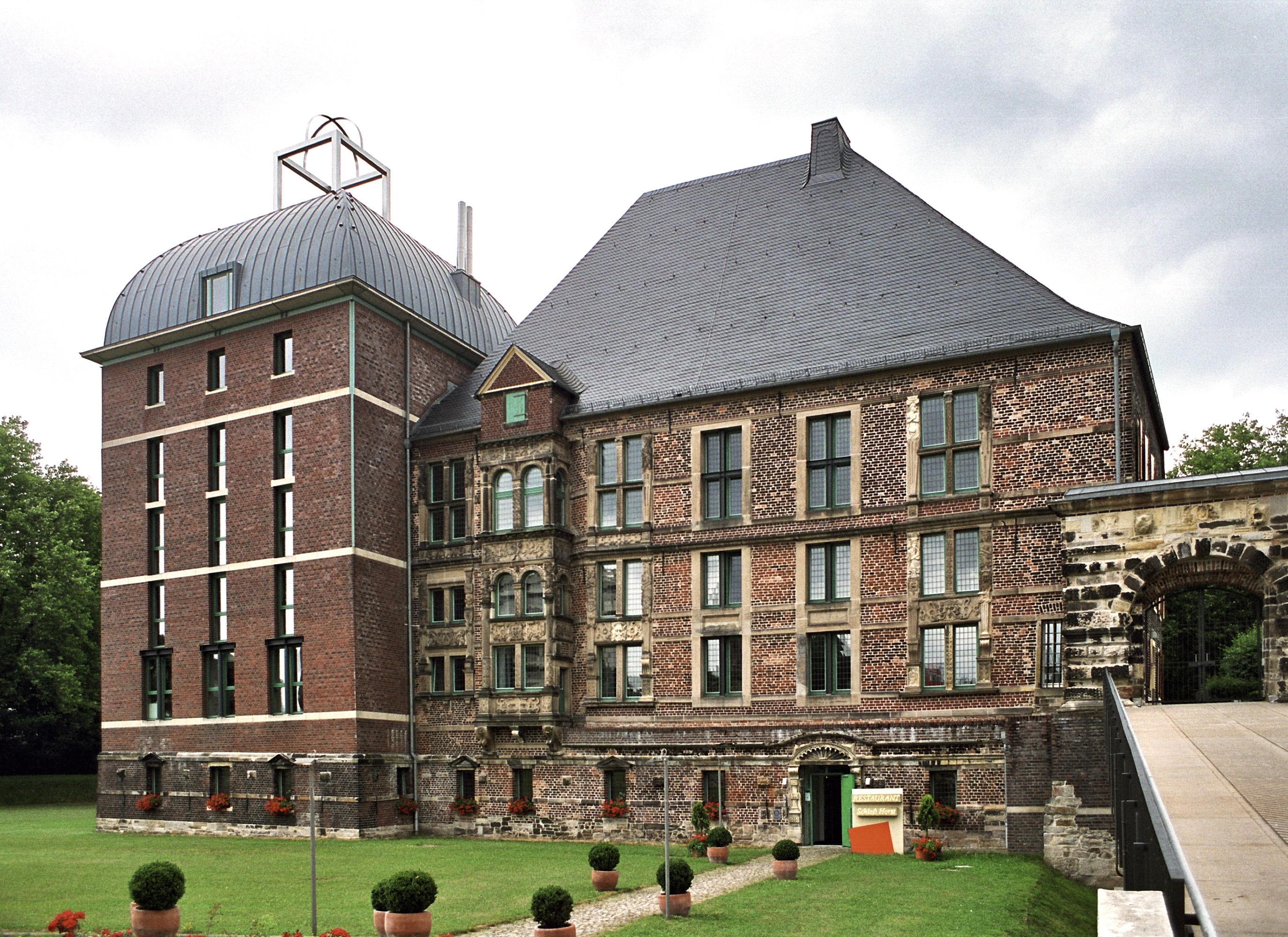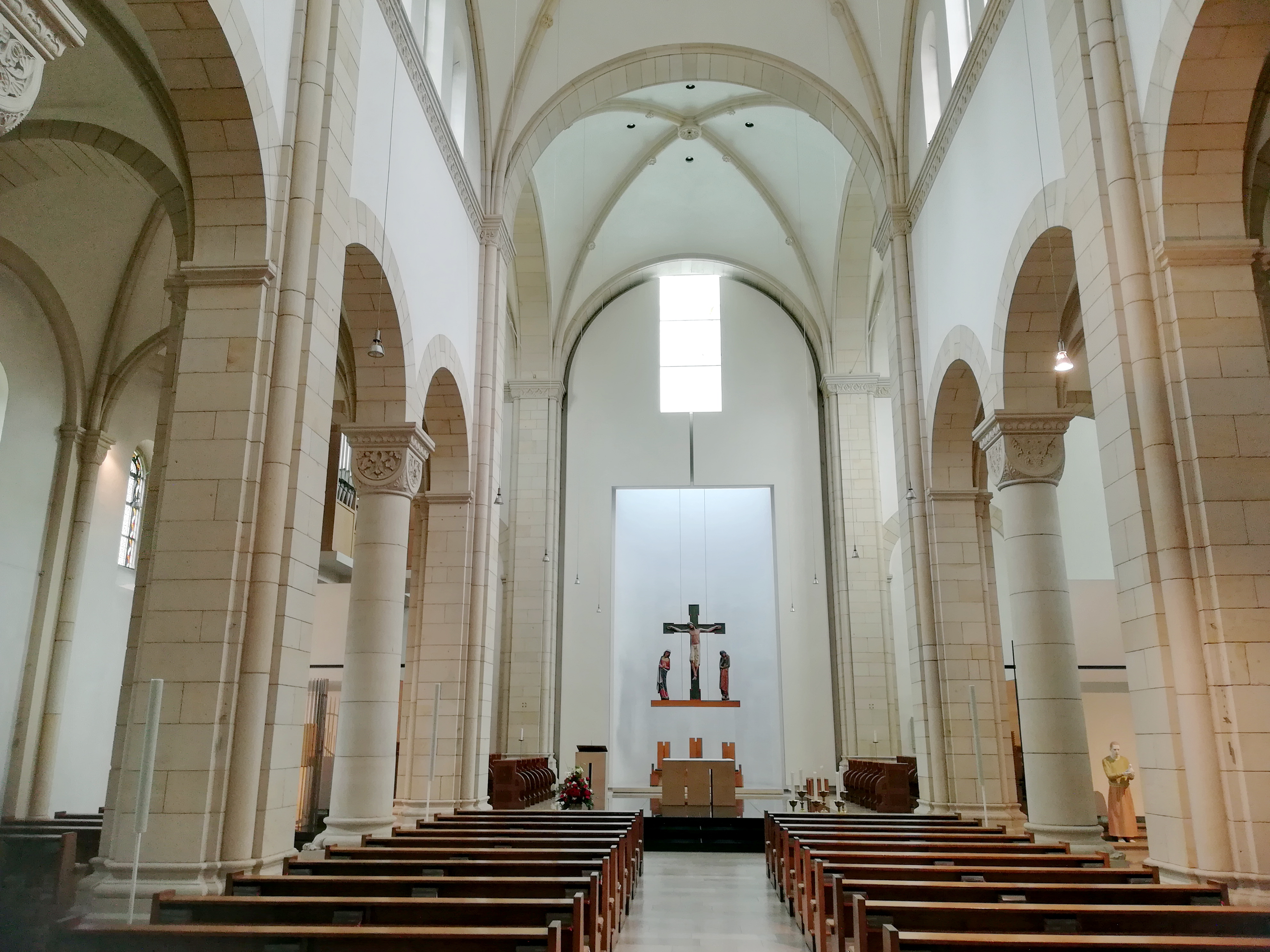|
Münster (region)
Münster is one of the five ''Regierungsbezirke'' of North Rhine-Westphalia, Germany, located in the north of the state, and named after the capital city of Münster. It includes the area which in medieval times was known as the Dreingau. Regierungsbezirk Münster mostly covers rural areas of Münsterland famous for their castles, e.g. Castle Nordkirchen and Castle Ahaus. The region offers more than a hundred castles, all linked up by the cycle path ''100 Schlösser Route''. The three southern municipalities are part of the Ruhrgebiet, a densely populated region with much industry. Besides this the area is mostly as green as the rest of Münsterland and historically a part of the landscape. The history of the ''Regierungsbezirk'' dates back to 1815, when it was one of the original 25 ''Regierungsbezirke'' created as a subdivision of the provinces of Prussia. The last reorganization of the districts was made in 1975, when the number of districts was reduced from ten to five, and t ... [...More Info...] [...Related Items...] OR: [Wikipedia] [Google] [Baidu] |
Regierungsbezirk
A ' (, 'governmental district') is a type of administrative division in Germany. Currently, four of sixteen ' (states of Germany) are split into '. Beneath these are rural and urban districts ' (plural, ) serve as regional mid-level local government units in four of Germany's States of Germany, sixteen federal states: Baden-Württemberg, Bavaria, Hesse and North Rhine-Westphalia. Each of the nineteen ' features a non-legislative governing body called a ' (governing presidium) or ' (district government) headed by a ''Regierungspräsident (Germany), Regierungspräsident'' (governing president), concerned mostly with administrative decisions on a local level for districts of Germany, districts within its jurisdiction. Saxony has ' (directorate districts) with more responsibilities shifted from the Landtag, state parliament. Translations ' is a German term variously translated into English as "governmental district", "administrative district" or "province",Shapiro, Henry D. and Jo ... [...More Info...] [...Related Items...] OR: [Wikipedia] [Google] [Baidu] |
Horst Castle
Horst Castle (German: Schloss Horst), located in the Horst district of Gelsenkirchen, is recognized as one of Westphalia, Westphalia's oldest and most significant Renaissance buildings.E. Alshut, H.-W. Peine: ''Schloss Horst in Gelsenkirchen'', 2006, pp. 3. During its construction in the 16th century, it ranked among the largest four-winged castle complexes north of the Alps, significantly influencing the architectural style of the Lippe Renaissance. On 15 December 1983 it was declared a listed building. Overview As early as the 11th century, a farmstead was situated on an island in the marshy area between two arms of the Emscher. Its inhabitants possibly fished for the Emscherbrücher thick heads native to the Emscherbruch quarry. Over time, this evolved into a castle complex that faced two devastating fires. In the aftermath of the second fire, the owner at the time, Rütger von der Horst, chose to rebuild the castle fully, resulting in its completion in 1578. The Renaissance ... [...More Info...] [...Related Items...] OR: [Wikipedia] [Google] [Baidu] |
Schloss Herten
Herten Castle () is a moated castle situated in the town of Herten in the administrative district of Recklinghausen (district), Recklinghausen in the state of North Rhine Westphalia, Germany. It is located within an old English landscape garden and its first mentioning dates back to 1376. In 1962, the main castle building was declared a cultural heritage monument. While foundations of today's main castle building incorporate elements from the 14th-century building, the buildings visible today were built in the 16th and 17th century by Coesfeld architect Henric de Suer and his son Johann. They were built for the families Stecke and Nesselrode. After the First World War, the main castle building was no longer used as a residence and started to deteriorate. Subsidence caused by the widespread sub-surface mining in the surrounding industrial Ruhr area added to the structural damage, bringing the castle buildings close to collapse. Only radical restoration measures taken by the Landsch ... [...More Info...] [...Related Items...] OR: [Wikipedia] [Google] [Baidu] |
Gerleve Abbey
Gerleve Abbey (in German ''Kloster'' or ''Abtei Gerleve'') is a monastery of the Benedictine Order situated between Coesfeld and Billerbeck in Westphalia (North Rhine-Westphalia), in Germany. History The community, dedicated to Saint Joseph, was founded in 1899 on the land of the ''Hof Wermelt'', a farm given for the purpose by the Wermelt family, to the monks of Beuron Archabbey. The monks took over the farm, celebrated church services in a small house chapel and supported the pastors in the area in their work. In June 1904, the west wing of the monastery was completed and it was formally declared an abbey. The first abbot was Raphael Molitor OSB, under whose leadership, the monastery experienced rapid growth. The farm, which made a significant contribution to the support of the monks, was continuously modernized. The abbey trained apprentices in various areas. Since 1918, Gerleve has been an important part of the "liturgical movement" in north-west Germany. At the same time, the ... [...More Info...] [...Related Items...] OR: [Wikipedia] [Google] [Baidu] |
Ahaus Castle
Ahaus (; Westphalian: ''Ausen'') is a town in the district of Borken in the state of North Rhine-Westphalia, Germany. It is located near the border with the Netherlands, lying some 20 km south-east of Enschede and 15 km south from Gronau. Ahaus is the location of one of Germany's interim storage facilities for radioactive spent fuel. History The first written mention of the aristocratic seat of ''Haus an der Aa'' dates from around 1030. Around 1120, Bernhard von Diepenheim had ''Ahaus'' Castle built where Ahaus Castle stands today. In 1154 his son Lifhard called himself ''von Ahaus'' for the first time. The lords of Ahaus belonged to the smaller noble dynasties in Westphalia in the wider environment of the Munster bishops. They got into a fight with them in 1176 when the nobleman Johann von Ahaus gave his castle as a fief to the Archbishop of Cologne. In 1177, however, John had to surrender to Prince Bishop Hermann II of Munstersubdue. The castles of Ahaus and Die ... [...More Info...] [...Related Items...] OR: [Wikipedia] [Google] [Baidu] |
Duisburg
Duisburg (; , ) is a city in the Ruhr metropolitan area of the western States of Germany, German state of North Rhine-Westphalia. Lying on the confluence of the Rhine (Lower Rhine) and the Ruhr (river), Ruhr rivers in the center of the Rhine-Ruhr metropolitan region, Rhine-Ruhr Region, Duisburg is the 5th largest city in North Rhine-Westphalia and the List of cities in Germany by population, 15th-largest city in Germany. In the Middle Ages, it was a city-state and a member of the Hanseatic League, and later became a major centre of the iron, steel, and chemicals industries. For this reason, it was heavily bombed in World War II. Today it boasts the world's largest inland port, with 21 docks and 40 kilometres of wharf. Status Duisburg is a city in Germany's Rhineland, the fifth-largest city (after Cologne, Düsseldorf, Dortmund and Essen) in the nation's most populous federal state of North Rhine-Westphalia. Its 500,000 inhabitants make it Germany's List of cities in Germany by p ... [...More Info...] [...Related Items...] OR: [Wikipedia] [Google] [Baidu] |
Wesel–Datteln Canal
The Wesel–Datteln Canal () is a long canal in North Rhine-Westphalia, Germany. It runs along the northern edge of the Ruhr Area, from the Rhine near Wesel () to the Dortmund-Ems Canal near Datteln (). It forms an important transport connection between the Lower Rhine and northern and eastern Germany, together with the parallel Rhine-Herne Canal. Construction of the Wesel–Datteln Canal was started in 1915, and the canal was opened in . It runs parallel to the river Lippe River, Lippe. The canal has six Lock (water transport), locks, at Voerde, Friedrichsfeld, Hünxe, Dorsten, Haltern, Flaesheim, Datteln, Ahsen and Datteln. The main ports along the canal are in Marl, North Rhine-Westphalia, Marl (Chemiepark Marl and Auguste-Victoria). ReferencesWasser- und Schifffahrtsamt Duisburg-Meiderich {{DEFAULTSORT:Wesel-Datteln Canal Canals in Germany Federal waterways in Germany Canals opened in 1930 ... [...More Info...] [...Related Items...] OR: [Wikipedia] [Google] [Baidu] |
Dortmund–Ems Canal
The Dortmund–Ems Canal is a long canal in Germany between the inland port of the city of Dortmund () and the seaport of Emden. The artificial southern part of the canal ends after at Herbrum lock near Meppen. The route then takes the river Ems for to Oldersum lock. From there, the canal continues along a second artificial segment of . This latter section was built because inland ships at the time of the construction of the canal were not built for the open sea, which they would have faced at the Dollart and the entry to the sea port of Emden. It is connected to the Ems-Jade Canal from Emden to Wilhelmshaven. History The canal was opened in to reduce demand on the railway network, which could not cope with the transport of products from the Ruhr area. Also, the canal was supposed to make coal from the Ruhr area more competitive compared to imported English coal. Furthermore, the steel industry in the eastern Ruhr area needed to import ore from abroad. The canal ... [...More Info...] [...Related Items...] OR: [Wikipedia] [Google] [Baidu] |
Bogestra
The Bochum-Gelsenkirchener Straßenbahnen AG ('), abbreviated BOGESTRA, is a public transport operator in the Ruhr area, most notably in the cities of Bochum, Gelsenkirchen and Herne. , the company operated, in whole or in part, 9 rail lines (2 Stadtbahn, and 7 tram), and 65 bus lines. In 2012, BOGESTRA transported a total of 144.9 million passengers. The company is a member of the Verkehrsverbund Rhein-Ruhr (VRR) public transport association. History BOGESTRA was founded by the cities of Bochum and Gelsenkirchen and Siemens & Halske AG in Berlin on 13 January 1896. At the time of the founding of the company, the transit network consisted of three lines built by Siemens & Halske in 1894 and 1895. Thus, BOGESTRA already had, at the time of its founding, approximately of streetcar network. The construction and operation of these lines remained with the Siemens & Halske AG, while BOGESTRA itself initially took only functional control. In the next 10 years the network grew ra ... [...More Info...] [...Related Items...] OR: [Wikipedia] [Google] [Baidu] |
Münsterland Giro
The Münsterland Giro is a cycling race annually held in Münsterland, Germany. It was first held in 2006 as a 1.2 race of the UCI Europe Tour, becoming a UCI race classifications, 1.1 race in 2007 and a 1.HC race in 2015. The race became part of the new UCI ProSeries in 2020. Winners External links Official website References {{DEFAULTSORT:Munsterland Giro UCI Europe Tour races Cycle races in Germany Recurring sporting events established in 2006 2006 establishments in Germany Münster (region) Sport in North Rhine-Westphalia UCI ProSeries races Münsterland Giro, * ... [...More Info...] [...Related Items...] OR: [Wikipedia] [Google] [Baidu] |
Sudden Stratospheric Warming
Sudden stratospheric warming (SSW) is an atmospheric phenomenon that occurs when polar stratospheric temperatures suddenly rise by several degrees (sometimes as much as 50 °C (90 °F)) over the course of a few days. SSW's occur high in the stratosphere, are often associated with Rossby waves and Polar Vortex breakdown and come in varying magnitudes. SSW events are significantly more common in the northern hemisphere than the southern hemisphere. History SSW's were discovered by Richard Scherhag, a German Meteorologist who worked at the Free University of Berlin. Starting in 1951, Scherhag launched radiosondes from Berlin's Tempelhof Airport to research temperature behavior in the upper stratosphere. However, on January 26th, 1952, Scherhag noticed that the upper stratosphere was beginning to warm at an abnormal rate. The warming continued for four days, by which time the upper stratosphere had warmed 33 °C. Scherhag reported this phenomenon in a journal later that ... [...More Info...] [...Related Items...] OR: [Wikipedia] [Google] [Baidu] |







